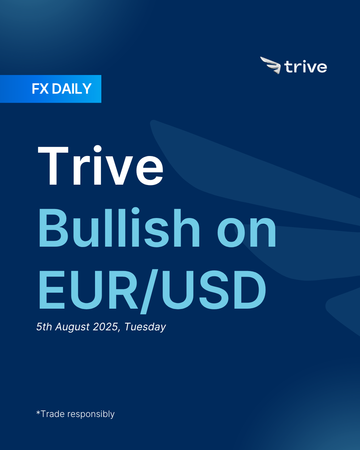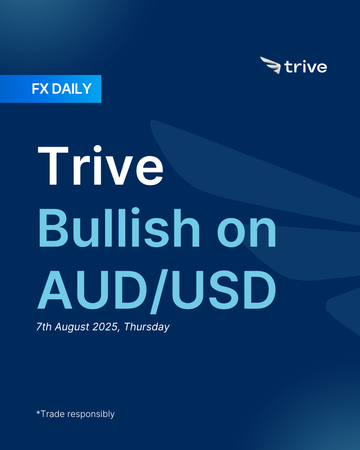FX Daily: Trive Bullish on GBP/USD

GBP/USD remains bullish, rebounding sharply after weak US jobs data boosted Fed rate cut bets. With no key UK data last week, the move was Dollar-driven. Focus now shifts to the BoE meeting—markets expect a cut, but a cautious tone may limit GBP upside. Overall bias favors further gains, but upside may cap near 1.35.
GBP: Focus the BoE meeting
The British Pound spent the week at the mercy of the US Dollar, enduring a steady decline before staging a dramatic recovery after a sharp collapse in the greenback. With no major economic data or political events in the UK, GBP/USD, or Cable, was completely driven by developments across the Atlantic. The pair fell for four consecutive days, breaking through important support levels at 1.3400 and 1.3300, and even briefly dipped below 1.3200. A strong run of US data and a hawkish Fed narrative powered the Dollar higher, pushing the Pound lower in the process.
Everything changed on Friday. A surprisingly weak US jobs report triggered a broad sell-off in the Dollar and led to a repricing of Fed rate expectations. This reversal sparked a massive short squeeze in Cable, which jumped from a weekly low near 1.3140 to reclaim the 1.3300 level, erasing all its earlier losses in a sharp end-of-week rally.
The UK’s economic calendar offered little to anchor the Pound. Data releases were minimal, and even the ones that did come out, such as the final July Manufacturing PMI at 48.0 and stronger-than-expected figures for June Consumer Credit and Mortgage Approvals, failed to move markets. With no meaningful domestic data, the Pound remained a passive follower of broader market moves.
The Bank of England was in its pre-meeting blackout period, so attention turned to the upcoming policy decision in August. Markets consistently priced in a strong likelihood—around 82 to 87 percent—of a 25 basis point rate cut. Expectations also leaned toward a dovish vote split, with some analysts, like those at Morgan Stanley, predicting a 1-7-1 outcome. This would see one member calling for no change, another pushing for a 50bps cut, and the majority opting for a standard 25bps move. This anticipation of easing added to the Pound’s softness through most of the week.
Geopolitically, the meeting between UK Prime Minister Starmer and US President Trump had no impact on the markets, as it produced no new policy developments. The UK also remained on the sidelines of the US-EU trade dispute, though it was later confirmed that British exports would face a 15% tariff rate—matching the EU’s deal—further reinforcing the UK’s secondary role in the trade narrative.
Overall sentiment around the Pound was entirely driven by the US Dollar. As markets leaned into the theme of US economic strength midweek, the Pound was sold consistently. Some support came from EUR/GBP, where the Euro lost ground as investors unwound a previously popular long position. Still, this wasn’t enough to offset the overall strength of the Dollar.
The real turning point came on Friday. The poor US NFP report caused a dramatic shift in sentiment. The resulting Dollar drop forced traders to exit their short positions on Cable, triggering a fast and forceful rally. The Pound’s performance this week was defined almost entirely by external forces, with its sharp rebound highlighting just how closely it tracked the US Dollar narrative from start to finish.
As of Sunday, the markets assign an 82% probability to a 25‐bps rate cut and an 18% probability that the BoE will hold rates steady at its August 7th meeting. The interest rate path is just slightly higher compared to last week, and the markets are pricing in 58‐bps of rate cuts over the next five meetings.
The British Pound remained under pressure for the last few weeks, weighed down by a shaky fiscal backdrop and political uncertainty at home. Early July brought speculation that Chancellor Reeves could be replaced, sparking a sharp rise in Gilt yields and a notable sell off in GBP. While the potential reshuffle itself wasn’t the core issue, fears that a more left-leaning successor could drive fiscal slippage rattled markets. Concerns over a possible debt doom loop, where weak growth leads to missed fiscal targets, more tax hikes, and even weaker growth, are beginning to resurface. With welfare cuts scrapped following internal Labour resistance, expectations are building for further tax increases this autumn, adding to household caution. UK consumers are now saving at levels not seen since the onset of the global financial crisis, while uncertainty around future fiscal policy continues to cloud business investment plans.
This backdrop sets the stage for Thursday’s Bank of England meeting. If the BoE can deliver a clear and confident message, signaling confidence that growth remains intact and inflation risks are manageable, we could see a bounce in GBP. But if the tone leans dovish or uncertain, especially given current vulnerabilities, we’ll be looking to sell the Pound. Our base case is neutral heading into the meeting, but we lean slightly bearish given the overall fragility in UK sentiment.
USD: Rate cut boost
The US Dollar had a rollercoaster week, beginning with strong gains driven by a confident economic outlook and hawkish Fed messaging, only to see that momentum collapse after a disastrous jobs report on Friday. The DXY surged early in the week, breaking above 99.00 as markets responded positively to a US-EU trade deal that was framed as a victory for the US. That bullish tone picked up mid-week after a strong Q2 GDP reading of 3.0% and a hawkish press conference from Fed Chair Powell, who emphasized the Fed’s willingness to act against inflation risks from tariffs. This pushed the Dollar above the 100.00 mark as traders rapidly scaled back expectations for rate cuts.
The mood changed entirely on Friday when the July Non-Farm Payrolls report shocked the market. The headline number came in far below expectations at just 73,000, and revisions to the previous two months were brutal, wiping out a combined 258,000 jobs. The three-month average dropped to only 35,000, signaling a labor market close to stalling. While the unemployment rate rose slightly to 4.2%, wages held firm at 3.9% year-over-year, but this did little to offset the negative surprise. The Dollar dropped sharply, falling back below 99.00, as markets quickly repriced for a September rate cut, ending the week with a dramatic pivot from hawkishness to renewed easing fears.
The strong mid-week momentum was built on a string of supportive data. Alongside the hot GDP print, the ADP employment report beat expectations at 104,000. Core PCE for Q2 came in at 2.5%, slightly above forecast. However, Friday added to the bearish shift as ISM Manufacturing PMI fell to 48.0—below the 50.0 mark that indicates contraction—and its employment sub-index plunged to 43.4. Earlier in the week, other figures showed jobless claims holding low at 218,000, while JOLTS Job Openings and Consumer Confidence offered a mixed but generally stable view of the labor market and consumer sentiment.
Policy-wise, Powell’s press conference was a major turning point. Following an FOMC decision to keep rates unchanged, Powell rejected the idea of a preemptive September cut and said the Fed would prevent tariff-driven price increases from evolving into more serious inflation. Markets took this as a warning that hikes weren’t off the table, which triggered a hawkish repricing. Traders reduced expected cuts for 2025 to just 36 basis points. But after the NFP report, those bets flipped entirely. By Friday, odds of a September cut jumped above 90%, and nearly 60 basis points of easing were priced in by year-end. Comments from dovish Fed members Waller and Bowman, who had dissented in favor of cuts, were also vindicated by the labor data.
President Trump added further pressure by sharply criticizing Powell after the NFP report, calling him a “stubborn MORON” and urging the Fed to cut rates immediately. His attack on the central bank added to the sense of urgency in the market’s response.
Geopolitical tensions also played a role. The week ended with the US imposing sweeping new tariffs on 92 countries, including 35% on Canada and 39% on Switzerland. This raised the average US tariff rate to 15.2%, a steep rise from 2.3% pre-Trump, and worsened global risk sentiment. While the EU-US trade deal was initially welcomed, it was later criticized by European leaders for being unfair, which weighed on confidence. Trade talks between the US and China continued in Stockholm but ended the week without any concrete progress. Meanwhile, tensions with Russia escalated, with Trump issuing threats of secondary sanctions and repositioning nuclear submarines in response to Russia’s rhetoric.
Market sentiment shifted dramatically from optimism about US economic strength to growing fears of a slowdown. The strong start of the week was fueled by upbeat data and a confident Fed. But Friday’s job report and the introduction of broad new tariffs erased that narrative, leading to a risk-off tone. US equities sold off, Treasury yields dropped, and the Dollar tumbled as markets braced for a weaker outlook and likely Fed easing ahead.
As of Sunday, the markets assign a 73% probability to a 25‐bps rate cut and a 27% probability that the Fed will hold rates steady at its September 17th meeting. The interest rate path is considerably lower than last week, and the markets are pricing in 80‐bps of rate cuts over the next five meetings.
In our view, the sharp reversal in the US Dollar last week marks a clear shift in sentiment. After a strong start to the week driven by upbeat data and hawkish Fed rhetoric, the tone completely changed with the July jobs report. The headline NFP miss was bad enough on its own, but the large downward revisions to previous months made it even harder to ignore. To us, it looks like the labor market is losing momentum faster than the Fed anticipated.
Because of that, we now see a September rate cut as the most likely outcome. The Fed had been trying to hold a more cautious tone, especially after Powell’s comments earlier in the week pushing back against rate cuts. But the data doesn’t support that stance anymore, and rate cut expectations have flipped aggressively, and we’re now looking at nearly 60bps of easing priced in by the end of the year.
We don’t believe the US economy is falling off a cliff. Wage growth is still decent, and there’s no sign of a major demand shock. But with job creation slowing and the unemployment rate edging up, the Fed has enough justification to ease in September, especially with ongoing geopolitical risks and rising tariffs starting to bite.
We’re sticking to our bearish baseline bias from last week.
 GBP/USD 4H
GBP/USD 4H
Disclaimer
This material is provided for informational purposes only and does not constitute financial, investment, or other advice. The opinions expressed in this material are those of the author and do not necessarily reflect the views of Trive International. No opinion contained in this material constitutes a recommendation by Trive International or its author regarding any particular investment, transaction, or investment strategy. This material should not be relied upon in making any investment decision.
The information provided does not consider the individual investment objectives, financial situation, or needs of any specific investor. Investors should seek independent financial advice tailored to their individual circumstances before making any investment decisions. Trive International shall not be liable for any loss, damage, or injury arising directly or indirectly from the use of this information or from any action or decision taken as a result of using this material.
Trive International may or may not have a financial interest in the companies or securities mentioned. The value of investments may fluctuate, and investors may not get back the amount they originally invested. Past performance is not indicative of future results.
For more information about Trive International, please visit http://trive.com/int
Additional Information
Investing involves risk, including the potential loss of principal. Diversification and asset allocation strategies do not ensure a profit or guarantee against loss. The content in this material is subject to change without notice and may become outdated or inaccurate over time. Trive International does not undertake any obligation to update the information in this material.
By accessing this material, you acknowledge and agree to the terms of this disclaimer. If you do not agree with these terms, please refrain from using this information.
कोई टिप्पणी नहीं
Home
Trive
TriveHub





0 टिप्पणियाँ